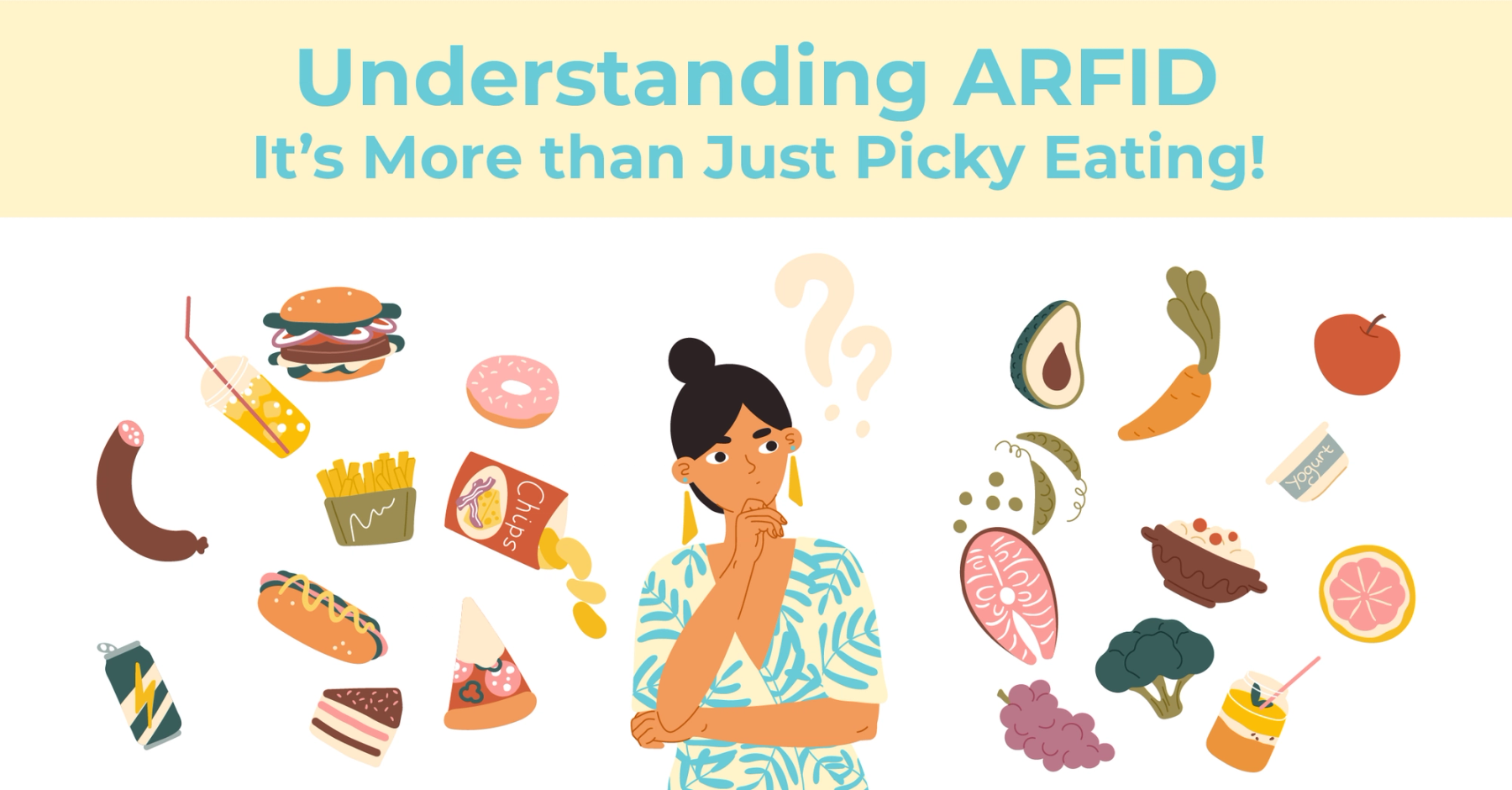August 25th, 2021

As a mental health provider specializing in eating disorder treatment, I have seen a wide variety of eating disorder presentations in recent years. An eating disorder I have seen more frequently over the past two years in inpatient and outpatient treatment settings is Avoidant/Restrictive Food Intake Disorder (ARFID).
ARFID was first introduced in the DSM-5 in 2013. While awareness of ARFID has increased since then, there are still many who do not fully understand the disorder.
ARFID is more than just picky eating, it is an eating disorder that impacts people of all ages. Picky eating is typically outgrown within the first few years of a child’s life, whereas ARFID may initially present as picky eating, but persists over time and becomes more severe. People with ARFID engage in a restrictive eating pattern in which they restrict the volume or types of food they consume, and in some cases both.
In cases of picky eating, most will substitute other foods and receive the nutrients needed to maintain a healthy diet. For those with ARFID, the restrictive eating pattern severely impacts their physical and mental health.

Unlike Anorexia Nervosa, in which restrictive eating is motivated by a fear of gaining weight, and disturbance in the way one experiences their body shape and weight, individuals diagnosed with ARFID engage in restrictive eating for one (or more) of the following reasons:
Unlike other eating disorders like anorexia nervosa and bulimia nervosa in which body image is the main concern, most individuals with ARFID are not afraid of gaining weight. Many who have lost weight express a desire to gain that weight back during the treatment process.
The pattern of avoidance of various foods and eating in general, and the fear of aversive consequences related to eating/drinking shed light on the anxiety that individuals living with ARFID deal with daily.
Many also experience depressive symptoms resulting from feeling left out of the many social events centered around food and drinks. Especially those who develop ARFID later in life, they remember what it was like to enjoy food and drinks with family and friends, and now struggle to take part in these experiences.

The causes of ARFID are currently unknown. Because the formal diagnosis is still relatively new, less is known about the causes of ARFID compared to other eating disorders.
It has been suggested that there is a biological component, but that has not been studied in depth yet. However, for those with concerns about aversive consequences, their restrictive eating patterns are related directly to those experiences or fears.
Some common examples I have seen multiple times in my work treating ARFID include:

The first step in treating ARFID is deciding the most appropriate level of care for treatment. Eating disorder treatment may include inpatient-level care, residential-level of care, partial/intensive outpatient programs, or outpatient therapy. This decision depends on the person’s overall health at the time of assessment.
For example, some individuals with ARFID have lost a significant amount of weight or are severely nutritionally compromised and need inpatient hospitalization. This typically involves tube feeding and monitoring vitals and laboratory results until they are stable.
For them, restoring weight and nutritional deficiencies is the priority, and then they can start the rest of their treatment.
The next part of treatment includes Cognitive Behavioral Therapy for ARFID (CBT-AR) which involves both Cognitive Behavioral Therapy (CBT) and Exposure and Response Prevention (ERP).
As recommended for all eating disorder treatment, it is important to have a treatment team. This team could be made up of a primary care physician, psychiatrist (if needed for medication), therapist, and dietician who specializes in eating disorder treatment.
Written By: Nicole Ortiz, PhD
At Clarity Clinic, we have highly trained staff who specialize in therapy and psychiatry services. To learn more about how we can support your mental health, call Clarity Clinic at (312) 815-9660 or schedule an appointment today.
Thomas, J., & Eddy, K. (2018). Cognitive-Behavioral Therapy for Avoidant/Restrictive Food Intake Disorder: Children, Adolescents, and Adults. Cambridge: Cambridge University Press. doi:10.1017/9781108233170
Our Services
Virtual/Online CarePHP and IOPAdult PsychiatryChild & Adolescent PsychiatryAdult TherapyChild & Adolescent TherapyCouples CounselingFamily TherapyGroup TherapyPsychological TestingTranscranial Magnetic Stimulation (TMS)